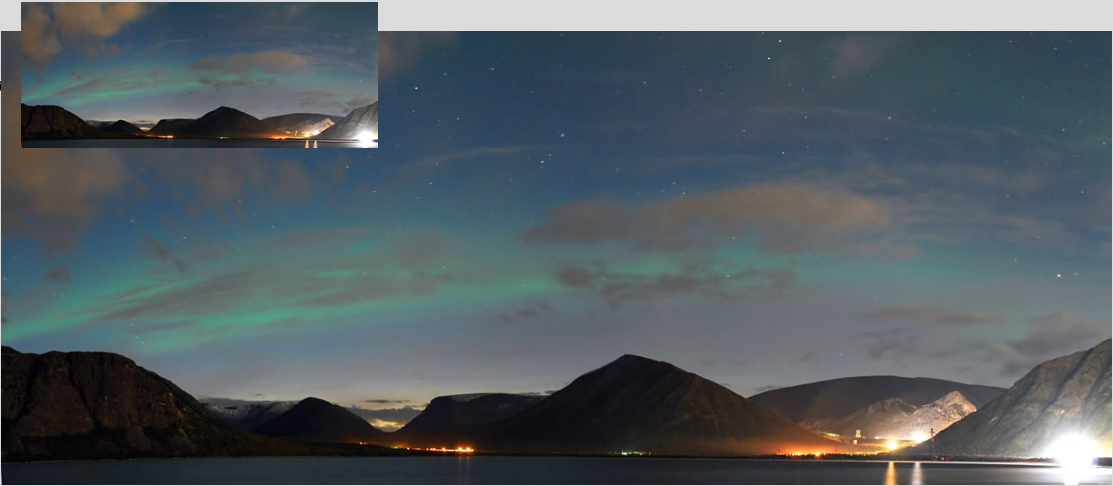Aurora - Kirovsk, Kolskiy Peninsula, Russia
Aurora - Kirovsk, Kolskiy Peninsula, Russia
The Kolskiy Peninsula in Northern Russia is known for its stunning natural beauty, and one of the most captivating phenomena that graces its skies is the Aurora Borealis, also known as the Northern Lights. Located in the town of Kirovsk, this remote region offers an ideal vantage point to witness the breathtaking display of colors dancing across the night sky. Alexander Chernukho, a talented photographer, captured an extraordinary image of the Aurora Borealis over Kirovsk on September 3rd, 2007. Let's delve deeper into this captivating spectacle and explore the science behind it.
What is the Aurora Borealis?
The Aurora Borealis is a celestial light show caused by the interaction between charged particles from the Sun and the Earth's magnetic field. As the solar wind, which is a stream of charged particles emitted by the Sun, reaches our planet, it interacts with the magnetosphere—a region surrounding the Earth influenced by its magnetic field. This interaction leads to the release of energy in the form of colorful lights, primarily observed near the Earth's polar regions.
The Science Behind the Aurora Borealis
The mesmerizing colors of the Aurora Borealis are a result of different gases in the Earth's atmosphere. When charged particles from the Sun collide with these gases, they become excited and emit light of varying wavelengths. Oxygen molecules produce green and red light, while nitrogen molecules emit blue and purple hues. The specific colors visible during an aurora display depend on factors such as altitude, atmospheric conditions, and the type of gas involved in the interaction.
The Unique Appeal of Kirovsk
Kirovsk, located on the Kolskiy Peninsula, offers a unique perspective for witnessing the Aurora Borealis. Its remote location and minimal light pollution provide optimal conditions for observing this natural phenomenon. The town's proximity to the Arctic Circle places it within the auroral oval, an area where the Northern Lights are frequently visible. Visitors to Kirovsk have the opportunity to witness the captivating dance of lights against the backdrop of the picturesque Arctic landscape.
Best Time to See the Aurora Borealis in Kirovsk
To increase your chances of witnessing the Aurora Borealis in Kirovsk, it is essential to visit during the optimal time of year. The best months for viewing the Northern Lights in this region are typically from September to March. During these months, the nights are longer, providing more opportunities for the auroras to illuminate the sky. It is important to keep in mind that weather conditions and solar activity play significant roles in the visibility of the Aurora Borealis.
Tips for Observing the Aurora Borealis
If you plan to visit Kirovsk and witness the mesmerizing Aurora Borealis, here are some tips to enhance your experience:
- Choose a dark location away from city lights to minimize light pollution.
- Dress warmly, as you may be spending hours outside in cold temperatures.
- Check the local weather forecast and aurora forecasts for increased chances of visibility.
- Bring a tripod and use a camera with manual settings to capture stunning photographs of the Northern Lights.
- Be patient, as aurora displays can be unpredictable and may require waiting for extended periods.
Other Attractions in Kirovsk
While the Aurora Borealis is undoubtedly the highlight of Kirovsk, this charming town offers other attractions for visitors to enjoy. Here are a few notable places worth exploring:
- The Khibiny Mountains: Embark on a hiking adventure through this mountain range, known for its scenic beauty and diverse flora and fauna.
- The Kola Superdeep Borehole: Visit one of the world's deepest boreholes, reaching a depth of over 7.5 miles (12 kilometers), and learn about scientific research conducted in the area.
- The Kirovsk Ski Resort: Enjoy a thrilling skiing or snowboarding experience in the winter months at this popular resort, surrounded by breathtaking Arctic landscapes.
Preserving the Natural Beauty
As visitors flock to witness the Aurora Borealis in Kirovsk, it is essential to prioritize the preservation of the natural environment. Responsible tourism practices, such as minimizing waste and respecting local wildlife, can help ensure the long-term sustainability of this magnificent destination.
In conclusion, Kirovsk on the Kolskiy Peninsula in Northern Russia offers a remarkable opportunity to witness the awe-inspiring Aurora Borealis. The captivating dance of colors in the night sky, caused by the interaction of charged particles and Earth's magnetic field, creates a truly magical experience. With its remote location, minimal light pollution, and proximity to the Arctic Circle, Kirovsk provides an ideal setting to immerse oneself in the beauty of this natural phenomenon. So, pack your warmest clothes, grab your camera, and get ready to be enchanted by the mesmerizing Aurora Borealis in Kirovsk.

Aurora Borealis over Kirovsk, Kolskiy Peninsula, Northern Russia. Imaged by Alexander Chernukho on 3rd September '07. Nikon D200 ISO 800 18mm f/3.5 30s exposure. Image ©Alexander Chernukho. shown with permission.
Note: this article has been automatically converted from the old site and may not appear as intended. You can find the original article here.
Reference Atmospheric Optics
If you use any of the definitions, information, or data presented on Atmospheric Optics, please copy the link or reference below to properly credit us as the reference source. Thank you!
-
<a href="https://atoptics.co.uk/blog/aurora-kirovsk-kolskiy-peninsula-russia/">Aurora - Kirovsk, Kolskiy Peninsula, Russia</a>
-
"Aurora - Kirovsk, Kolskiy Peninsula, Russia". Atmospheric Optics. Accessed on November 26, 2024. https://atoptics.co.uk/blog/aurora-kirovsk-kolskiy-peninsula-russia/.
-
"Aurora - Kirovsk, Kolskiy Peninsula, Russia". Atmospheric Optics, https://atoptics.co.uk/blog/aurora-kirovsk-kolskiy-peninsula-russia/. Accessed 26 November, 2024
-
Aurora - Kirovsk, Kolskiy Peninsula, Russia. Atmospheric Optics. Retrieved from https://atoptics.co.uk/blog/aurora-kirovsk-kolskiy-peninsula-russia/.